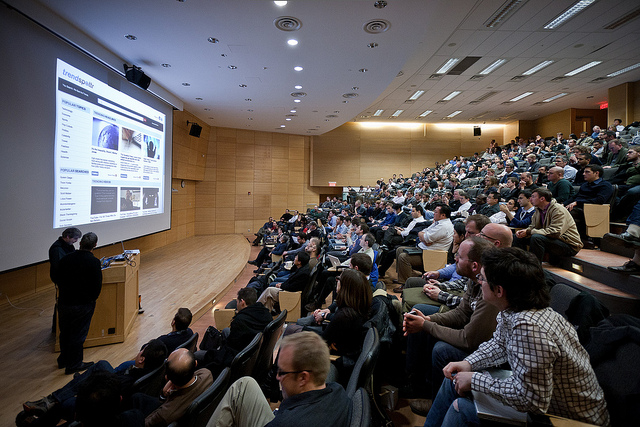I am sick of hearing there is no money for #startups in Canada. BULLSHIT! It might be there is no money for YOUR startup in Canada.
— David Crow (@davidcrow) January 30, 2013
Mark Evans (LinkedIn) wrote a blog post about my tweet. The blog post captures much of my sentiment and frustration around entrepreneurs. I commented about entrepreneurs learning about how to build a successful, high growth emerging technology companies. And there are lots of ways to learn what is considered a successful company. And a great way to learn is to learn from others that have been in the trenches. Debbie Landa (LinkedIn) and her team at Dealmaker Media have done most of the hard work for you.
They have brought together a great event. Attending the event won’t bring you investment. It won’t make you a successful company. But it might increase the odds. They are bringing together an amazing set of entrepreneurs. And they are bringing them to Toronto and Montreal to share their experiences, stories about what worked and didn’t work for their companies.
Local Events Matter
You can and should get your ass on plane and head to New York City and San Francisco to attend events. But you don’t always have to. There are advantages to attending these events locally.
- Local connections can help you see The First Rule of Real Estate – you can find and connect with local talent. Whether that is for funding, moral support, hiring, etc. There will be people you do not know yet. Easy way to find them out.
- Travel costs are less for regional travel. If you live in Ottawa or Montreal or Halifax, you can make it to Toronto or Montreal by plane, train or automobile for a lot less than travelling elsewhere.
- Travel time is lessened. You can spend a day.
This all assumes that the event is providing amazing content that you would travel to consume.
World Class Content
The content that Debbie and team have assembled is unbelievable. If you don’t know who these people are, my advice is take a little bit of time and use the GOOG. These are entrepreneurs that have seen the ups and downs, the ins and outs of successful businesses.
Every single person is worthy of a keynote presentation at a larger conference. This is not a vanity presentation. They are on stage sharing information about their specific expertises in building successful businesses. It’s not Mark Organ talking about random things, which is fun, but Mark Organ talking about leveraging disruptive technology in fund raising. Holy crap! You want to learn how Mark used AngelList, LinkedIn and other tools to raise 2 of the most impressive rounds of capital in Canada…quickly.
Every single person speaking, every one, will be providing expertise about what they did to build a successful company. Here is the list of presenters in Toronto:
- Brant Cooper LinkedIn Follow @brantcooper
- Mike Beltzner LinkedIn Follow @beltzner
- Kate Rutter LinkedIn Follow @katerutter
- Laura Fitton LinkedIn Follow @pistachio
- Danielle Morrill LinkedIn Follow @daniellemorrill
- Scott Kveton LinkedIn Follow @kveton
- Dan Martell LinkedIn Follow @danmartell
- Michael Litt LinkedIn Follow @michaellitt
- Mark Organ LinkedIn Follow @markorgan
You want more details, check out my first post. Do your homework. But this is an amazing opportunity. The lineup is different in Montreal. It includes 2 of my close friends, but they are 2 of the best people in helping startups become successful. Mark MacLeod Follow @startupcfo and Alistair Croll Follow @acroll. Unbelievably kind and intelligent people, who beyond that know WTF it is startups need to do to become successful. They like the others are the best of the best.
Our Commitment to Successful Companies
There are initiatives like Startup Visa Canada and the Upside Foundation that we strongly support. And we’re committed to helping provide education to entrepreneurs to help them to build successful companies.
We’ve committed to provide a limited number of $100 discounts. I am not going to tell you how many. If you are building a successful startup, and you want to hear the tactics and advice of other entrepreneurs that have been massively successful in building their startups, sign up now and save $100 before the discount expires.
- GrowTalks Montreal – February 19, 2013 – Register use promo code: startupnorth
- GrowTalks Toronto – February 21, 2013 – Register use promo code: startupnorth










